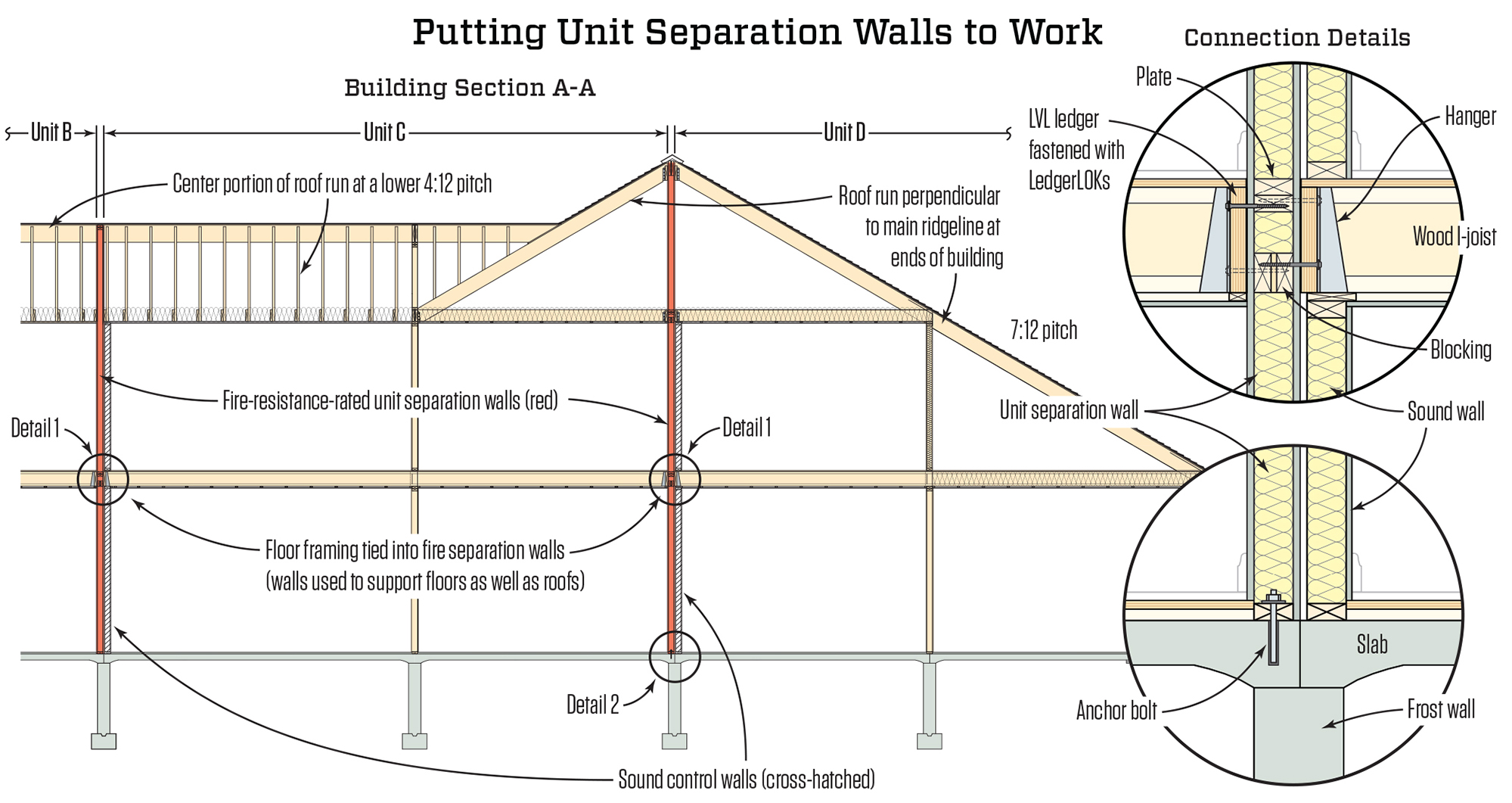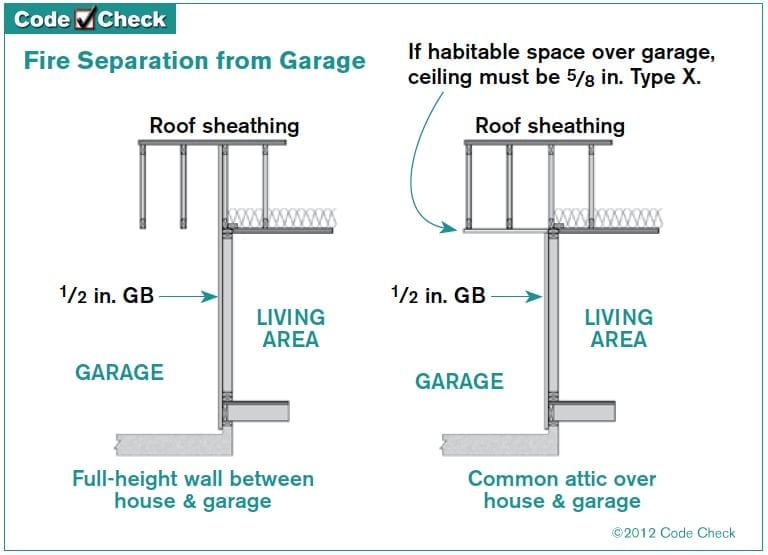New exception allows for the reduction of the 1 hour fire resistance rating of the exterior wall assembly between the building and the exterior area of assisted rescue provided the building is equipped throughout with either a nfpa 13 or 13r automatic sprinkler.
Fire separation between dwelling units roof.
O the closest interior lot line o the centerline of a street or public way o an imaginary line between two buildings on the same lot errata.
New exception decrease reduction in fire rating.
This is a classic type of design decision.
The intent of the typical construction details shown in open link in same page figure 3 7 1 3 is to ensure that combustible materials external or internal are not directly exposed to fire at the junction of the wall and non combustible roof eaves lining guttering and the like.
Fire area appears in the building code mostly in chapter 9 where it is used as a threshold for requiring either fire separation or fire sprinkler systems.
Buildings can sit directly on the property line provided they meet the fire resistance requirements and do not have roof overhangs or exterior wall openings.
Dwelling units in two family dwellings must be separated from each other by wall and floor assemblies having a minimum 1 hour fire resistance rating.
Footnote h group u carports and private garages with fsd of 5 feet do not require fire rating.
Fire resistance shall run from foundation to underneath the roof sheathing.
Other forms of construction may also be acceptable provided that they achieve this intent.
The distance from the face of the building to one of the following.
Fire separations extend from the top of the foundation to the underside of the roof sheathing cbc 2 709 4 floor ceiling assemblies separating dwelling units within the same building require a fire resistance rating of not less than 1hr.
4 e40 15 ibc 1009 7 2 separation.
Since many of the fire suppression system thresholds see ibc section 903 2 are based upon the fire area separation of a single occupancy into small fire areas can be an acceptable method for avoiding the use of sprinklers.
For example section 903 2 9 states that one threshold of sprinklering the entire building is when such a building contains a group s 1 fire area of greater than 12 000 square feet.






















